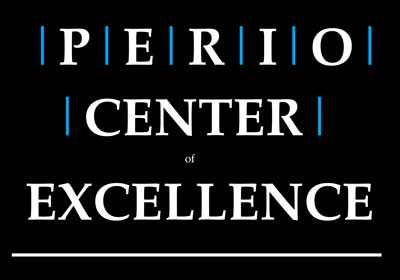Dental extraction removes a tooth from its socket in the jawbone. It is typically performed to address severe damage, decay, or other dental issues that restorative treatments cannot resolve. This procedure can significantly impact oral health conditions; for example, removing a severely decayed or infected tooth can prevent the spread of infection to surrounding teeth and tissues, thus safeguarding overall dental health. Additionally, extractions can help alleviate overcrowding, facilitating proper alignment of the remaining teeth and improving bite function. However, it's crucial to manage the extraction site properly and consider potential effects on adjacent teeth and jawbone density, as failure to address these aspects can lead to complications such as shifting of neighboring teeth, bone loss, or changes in bite alignment.
What to Expect During a Tooth Extraction Procedure
- Before the extraction, our dentist in Woodlands, TX, will conduct a thorough examination, which may include X-rays to assess the tooth's position and the surrounding bone structure. You'll discuss your medical history, any medications you're taking, and your options for anesthesia or sedation.
- On the day of the procedure, the area around the tooth will be numbed with a local anesthetic to minimize pain. For more complex extractions or if you experience significant anxiety, sedation options such as nitrous oxide or intravenous (IV) sedation may be offered.
- For a simple extraction, the dentist will use specialized instruments to loosen the tooth and remove it from the socket. For a surgical extraction, which may be necessary for impacted or broken teeth, an incision might be made in the gum tissue to access and remove the tooth, and sometimes, the tooth will be sectioned into smaller pieces to facilitate removal.
- After removing the tooth, the extraction site may be cleaned and, if necessary, stitched to promote healing. You'll receive instructions for post-operative care, which typically includes managing pain with prescribed or over-the-counter medications, applying ice packs to reduce swelling, and following specific guidelines for oral hygiene to prevent infection.
- A follow-up appointment may be scheduled to check the healing process and address concerns. It's important to adhere to the aftercare instructions provided to ensure proper recovery and minimize complications. Contact us to learn more.
The Role of Sedation in Tooth Extractions
Sedation plays a crucial role in tooth extractions by significantly improving patient comfort and managing anxiety, which can be particularly beneficial for individuals who are nervous about dental procedures. By using various forms of sedation, our dentists can ensure that the extraction process is as smooth and stress-free as possible.
Local anesthesia is the most commonly used form of sedation for simple extractions. It numbs the area around the tooth, blocking pain while the patient remains fully conscious. This method is effective for straightforward procedures where the patient may not require additional calming. However, for patients with higher levels of anxiety or those undergoing more complex extractions, other sedation options may be preferred.
Nitrous oxide, often called laughing gas, is inhaled through a mask and provides a calming effect and mild pain relief. It helps patients feel relaxed and less anxious, making it suitable for those with moderate dental fears. Nitrous oxide allows patients to remain conscious and responsive while feeling more at ease during the procedure.
For individuals with severe dental anxiety or those undergoing more extensive procedures, oral sedatives, and intravenous (IV) sedation can be utilized. Oral sedatives are taken in pill form before the appointment to induce relaxation and reduce stress. IV sedation, administered directly into the bloodstream, provides a deeper level of relaxation and amnesia, ensuring that patients are comfortably sedated and may not remember the procedure. This is particularly advantageous for complex extractions or patients with significant anxiety.
Overall, the role of sedation in tooth extractions is to enhance the patient experience by reducing pain and discomfort, alleviating anxiety, and facilitating a more efficient and effective procedure. By choosing the appropriate form of sedation based on the patient's needs and the complexity of the extraction, dentists can help ensure a smoother and more positive outcome.
The Benefits of Tooth Extraction for Oral Health
Prevention of Infection Spread
Removing a severely decayed or infected tooth can prevent the infection from spreading to surrounding teeth and tissues. This is particularly important for avoiding systemic infections and preserving overall oral health.
Alleviation of Pain
Extracting a problematic tooth can relieve persistent pain caused by advanced decay, abscesses, or other dental issues, improving the patient's quality of life and comfort.
Improvement of Oral Function
In cases of overcrowding or misalignment, extracting one or more teeth can create space for the remaining teeth to shift into a more functional and aligned position. This can enhance chewing efficiency and bite function.
Facilitation of Orthodontic Treatment
Tooth extraction in Woodlands, TX, may be recommended as part of orthodontic treatment to create sufficient space for teeth to be correctly aligned with braces or clear aligners. This can lead to improved dental aesthetics and function.
Prevention of Further Damage
Removing a tooth beyond repair can prevent damage to adjacent teeth and the surrounding bone structure. This can help maintain the overall integrity of the dental arch and prevent more extensive and costly treatments in the future.
Whether for a damaged, decayed, or impacted tooth, we provide gentle and effective extraction procedures to ensure your comfort and health. Visit the Periodontal Center of Excellence Dental Implant Center at 3 Grogans Park Dr. Ste 103, The Woodlands, TX 77380, or call (281) 292-1833 to schedule your consultation today to discuss your options and get back to enjoying a healthy, pain-free smile.
